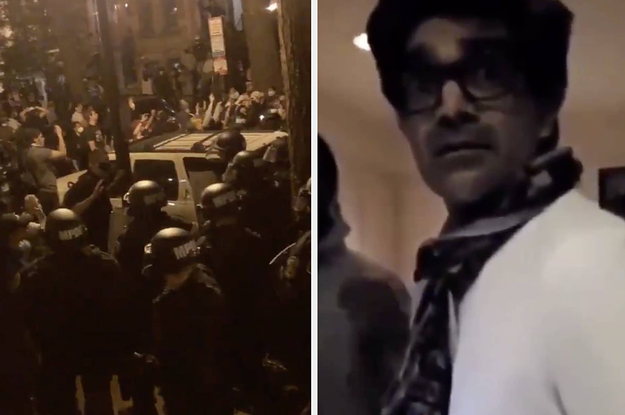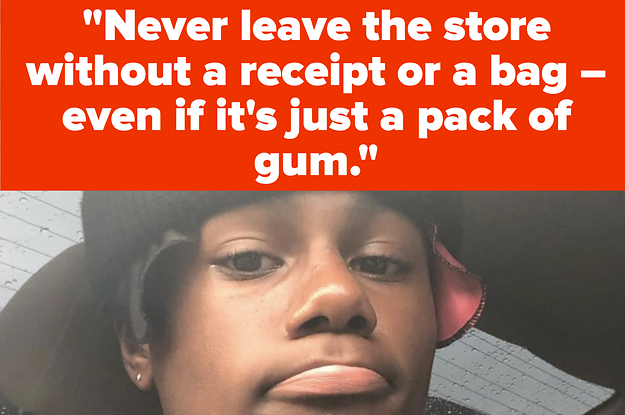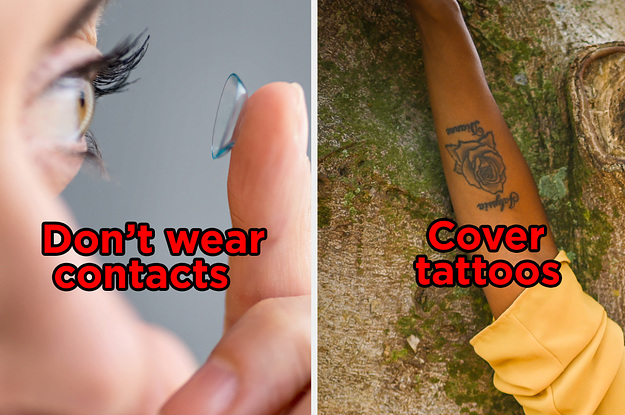Month: June 2020

Yesterday evening, just after delivering an address to the nation, President Trump walked across the White House lawn, across Pennsylvania Avenue, and up to St. John’s Church, Lafayette Square. Why? To have his picture taken with a Bible.
Not to pray. Not to share any faith-based thoughts. Just the photo op.
That’s the simple story, which is silly on its face. But the backdrop makes it all the more surreal.
The president’s address just prior included a threat to deploy the military to control rioting, which has taken place in or after some of the nation’s protests over police brutality and racial injustice. In his speech, he said he was “an ally of all peaceful protesters.”
But in order for the president to take his Bible-holding photos, a large group of peaceful protesters legally assembled near the White House were forced back by police and the National Guard, using tear gas. According to ABC News, some people were beaten with batons and shields, including at least one news photographer. Watch the incident here:
The disconnect between the president’s words and what was happening outside the White House gates while he said them is stunning.
Equally stunning is the fact that the church didn’t even know he was coming. Gina Gerbasi, a rector at St. Johns, was working in the patio area of the church square to offer water and aid to protesters when she was blindsided by the violent dispersing of the crowd. She wrote on Facebook:
“Friends, I am ok, but I am, frankly shaken. I was at St. John’s, Lafayette Square most of the afternoon, with fellow clergy and laypeople – and clergy from some other denominations too. We were passing out water and snacks, and helping the patio area at St. John’s, Lafayette square to be a place of respite and peace. All was well – with a few little tense moments – until about 6:15 or so. By then, I had connected with the Black Lives Matter medic team, which was headed by an EMT. Those people were AMAZING. They had been on the patio all day, and thankfully had not had to use much of the eyewash they had made. Around 6:15 or 6:30, the police started really pushing protestors off of H Street (the street between the church and Lafayette Park, and ultimately, the White House. They started using tear gas and folks were running at us for eyewashes or water or wet paper towels. At this point, Julia, one of our seminarians for next year (who is a trauma nurse) and I looked at each other in disbelief. I was coughing, her eyes were watering, and we were trying to help people as the police – in full riot gear – drove people toward us. Julia and her classmates left and I stayed with the BLM folks trying to help people. Suddenly, around 6:30, there was more tear gas, more concussion grenades, and I think I saw someone hit by a rubber bullet – he was grasping his stomach and there was a mark on his shirt. The police in their riot gear were literally walking onto the St. John’s, Lafayette Square patio with these metal shields, pushing people off the patio and driving them back. People were running at us as the police advanced toward us from the other side of the patio. We had to try to pick up what we could. The BLM medic folks were obviously well practiced. They picked up boxes and ran. I was so stunned I only got a few water bottles and my spray bottle of eyewash. We were literally DRIVEN OFF of the St. John’s, Lafayette Square patio with tear gas and concussion grenades and police in full riot gear. We were pushed back 20 feet, and then eventually – with SO MANY concussion grenades – back to K street. By the time I got back to my car, around 7, I was getting texts from people saying that Trump was outside of St. John’s, Lafayette Square. I literally COULD NOT believe it. WE WERE DRIVEN OFF OF THE PATIO AT ST. JOHN’S – a place of peace and respite and medical care throughout the day – SO THAT MAN COULD HAVE A PHOTO OPPORTUNITY IN FRONT OF THE CHURCH!!! PEOPLE WERE HURT SO THAT HE COULD POSE IN FRONT OF THE CHURCH WITH A BIBLE! HE WOULD HAVE HAD TO STEP OVER THE MEDICAL SUPPLIES WE LEFT BEHIND BECAUSE WE WERE BEING TEAR GASSED!!!!
I am deeply shaken. I did not see any protestors throw anything until the tear gas and concussion grenades started, and then it was mostly water bottles. I am shaken, not so much by the taste of tear gas and the bit of a cough I still have, but by the fact that that show of force was for a PHOTO OPPORTUNITY. The patio of St. John’s, Lafayette square had been HOLY GROUND today. A place of respite and laughter and water and granola bars and fruit snacks. But that man turned it into a BATTLE GROUND first, and a cheap political stunt second. I am DEEPLY OFFENDED on behalf of every protestor, every Christian, the people of St. John’s, Lafayette square, every decent person there, and the BLM medics who stayed with just a single box of supplies and a backpack, even when I got too scared and had to leave. I am ok. But I am now a force to be reckoned with.”
In addition, St. John’s Church, Lafayette Square posted a statement on social media stating that they were “shocked” by the president’s visit and “even more appalled at the violent clearing of Lafayette Square to make the visit possible.”
The bishop of the Episcopal Diocese of Washington also issued a statement condemning what took place on and around church grounds, saying that the president’s message was “antithetical to the teachings of Jesus and everything our church stand for” and that she was “outraged.” She pointed out that the president did not pray when he came to the church, nor did he acknowledge “the agony and sacred worth of people of color in our nation who rightfully demand an end to 400 years of systemic racism and white supremacy in our country.”
Speaking on behalf of the Diocese, she added, “In no way do we support the President’s incendiary response to a wounded, grieving nation.”
Powerful words from leadership of the church President Trump chose to use for optics.

After a night of peaceful protests in Downtown Phoenix turned destructive on Saturday night, pro-football punter Marquette King brought people together to clean up the mess the next morning.
King is best known as an All-Pro punter for the then-Oakland Raiders from 2012 to 2017. He briefly played for the Denver Broncos in 2018 and most recently kicked for the XFL’s St. Louis Battlehawks.
On Sunday morning, King sent out a tweet asking for people to join him helping to clean up the city.
“Since I’m a resident of AZ I’m gonna be in Downtown Phoenix around 10ish with gloves and trash bags cleaning up the city,” King tweeted. “All races are welcome to come clean the city with me. Officers should come too.”
Over a dozen people showed up to clean up graffiti and broken glass in the downtown area.

Twitter
twitter.com
Some of the people who turned up to help were friends with King, like former ASU quarterback Robert Newslon, Jr. Some had never heard of King, but just wanted to help.
“So I just went on Twitter and I found ‘Phoenix cleanup’ and I search for that and I saw Marquette’s post and I didn’t know who he was,” another said.
King saw the cleanup as an opportunity to bring people together. “It’s a lot of division and I’m all about peace and love and that’s what I want my message to be,” King told reporters.
After the cleanup, King thought the day was a huge success.
“Today was a success. #GeorgeFloyd was a believer in peace and love as well as myself n everyone that was out here today helping people in Phoenix,” he tweeted. “It’s ok to be different! I choose to make an impact in showing love n peace. Make a difference but be smart and calculated.”

Twitter
twitter.com
In his tweet, King noted that it’s “ok to be different!” and that’s s huge reason why, even as a punter, he managed to be one of the most popular players on the Raiders during his tenure.
King was known for his booming foot as well as his ability to cut a rug on the field.
Here’s his patented Donkey dance.
There’s also the famous flag dance (that got him flagged for a penalty.)

King ranked among the top punters in the game during his NFL career. Rumors have it that his eccentric style led to him to being cut from the Raiders by the team’s new coach Jon Gruden in 2018.
While his style may have made him a bit much for the No Fun League, King believes that his attitude has helped him be a better person and to help those around him.
“I like to make other people’s day,” he told The Undefeated. “You might catch [someone] that might want to kill somebody today, but you walk up to them and you’re like, ‘How’s your day going?’ You know, then you crack a joke … [they] might not want to kill [that someone] today. You never know.”
“Everybody being themselves and not worrying about what other people think about them,” he added. “It’s just loving one another. Encouraging one another. And being positive.”
We’re almost halfway through 2020, and one of the good things that has come from it are these YA books.
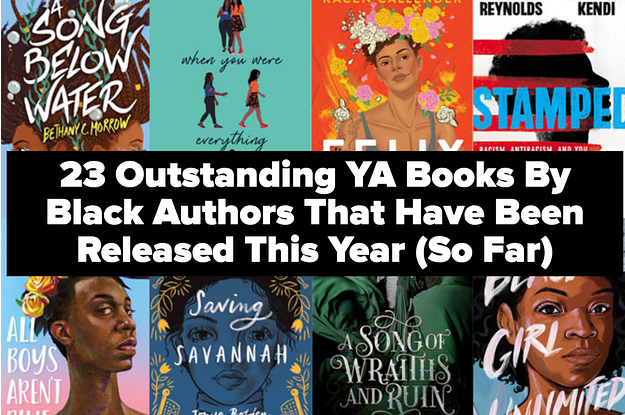
Two of the police officers were fired from the Atlanta Police Department the day after the violent encounter.
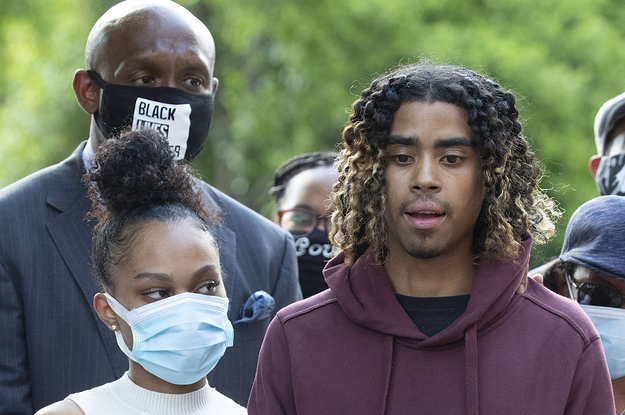

Hey, fellow white Americans.
It’s been a week. Many of us are horrified by the murder of George Floyd and Ahmaud Arbery and Breonna Taylor and other Black Americans and are finally coming around to seeing how real the issue of racism is in our country. We hear our friends who aren’t white asking us to take action. We may recognize that we have a responsibility to do more than simply “not be racist,” but we may not be sure where to begin or what action looks like in practical terms.
Welcome to the world of anti-racism.
The goal here is to dismantle racism in our systems and institutions, as well as root it out within ourselves. As inheritors of a country built with the labor of enslaved Black people on land stolen from Indigenous people—a country whose systems were designed by and for white people—racism comes with the territory. None of us are immune.
Don’t take it personally. We didn’t choose our skin any more than anyone else, and this isn’t about “guilt.” But we inherited a racial legacy, and we have a responsibility to see where we benefit from it. We also have a responsibility to use our power and privilege to repair the damage that racial legacy has done and keeps doing.

A simple definition of racism used in racial justice work is “prejudice + power.” Most of us are fairly clear on what prejudice entails —stereotyping, profiling, discriminating, etc.—but many of us struggle with what the power part means for us. And that’s the part that we can utilize to enact desperately needed systemic change.
We may not consciously realize it, but white Americans, as a collective, have more power than any other single group to either maintain or change things. And we also have individual power that we can wield for better or for worse.
Keep in mind that none of this is simple. Since we’re trying to build an equitable and just society—which we’ve literally never seen in this country or arguably anywhere on this planet—we’re all in learning mode. But a lot of work has been done by racial justice advocates and activists to determine how white folks can contribute most effectively to this work.
Though not an exhaustive list, here are some practical ways we can use our power to push for racial justice on an ongoing basis.
Use the power of PRIVILEGE to disrupt incidents of racial injustice.
White privilege means your skin color offers you a certain measure of protection in our society—and that privilege can be used as a tool. That might mean stepping in with your voice when you witness injustice happening, knowing that a fellow white person or person in authority is more likely to listen to you than a person of color. Sometimes it means physically standing between a person of color and someone who is trying to harm them. We may not think it makes much of a difference, but it does. White folks are less likely to be viewed by other white folks as a threat or a suspect or a potential criminal, and we can physically disrupt racial injustice simply by placing our white self in front of it.
Here’s an example of disrupting injustice with your voice:
Cracking the Codes: Joy DeGruy “A Trip to the Grocery Store”
www.youtube.com
Here’s an example of stepping in to shield a person of color with your body:
Use the power of your WALLET to support the work of people of color.
The economic disparity between white and Black Americans is a vast and often overlooked element of racial inequality. From the lack of generational wealth stemming from nearly 250 years of slavery to laws and policies that specifically kept Black people from accumulating wealth, white power-holders in the U.S. created and maintained this disparity. That doesn’t mean all white people are rich and all Black people are poor; it means there’s an ongoing collective disparity caused by racism that needs to be redressed. We can help by financially supporting minority-owned businesses, as well as creators, artists and activists of color.
Use the power of CHOICE to defer to leaders of color in this fight.
We are free to choose how we take action and decide who we listen to. Some of us might feel compelled and eager to lead a movement or launch an initiative ourselves, because that’s how we’re used to taking action. But there are already leaders in this space—powerful, activist people of color who have been at this for a long, long time, whether we’ve realized it or not. This movement doesn’t need us to sweep in as a savior and take over anything. Look into organizations like Color of Change or Showing Up for Racial Justice. Our role is to take direction from the leaders already here, to listen and learn, and to be of service alongside the people who’ve been doing this work in ways that they tell us are most helpful.
Use the power of your PLATFORM to elevate voices of people of color.
Social media gives us the opportunity to speak publicly any time we wish. Most of us have fairly homogenous social circles, even if we live in diverse communities, so exposing our mostly white networks to diverse perspectives helps voices that need to be heard reach further. Start following social media account of people of color (here’s a list of Black thought leaders to start with) and share their posts. When you read an article by a Black author, pass it along. Use the public platform you have to amplify the voices that need to be heard.
Use the power of POLITICAL ACTION to contact lawmakers and demand change.
White people have massive political power. We have always held—and still do hold—a disproportionate number of seats in legislatures (and all governmental positions). And whether we admit it or not, we are the ones who the people at the top listen to first and foremost. We can use that power to push for reform. One place to start right now would be police reform. The Center for Policing Equity is a good resource to explore what kinds of reform to push for.
Use the power of your VOTE to elect anti-racism candidates.
Don’t underestimate the power of voting at all levels—local, state, and national. White folks have always been the largest voting block in the nation, and historically we’ve used that power to elect a disproportionate number of white government officials. Supporting people of color as candidates and voting for candidates with a proven anti-racism track record is one way to shift that power to make our government more representative of the American people.
And local elections are particularly important, as in many localities voters elect sheriffs, prosecutors and judges—positions that directly impact racial justice. If you’re not sure if you’re registered to vote or need to know how to vote in your area, go here.
Use the power of ACCESS to resources to educate yourself.
One thing that becomes woefully clear to as you dive into anti-racism work is how abysmal most of our education on the history of race in our country really is. Like, it’s so bad. I grew up in a household that was actively valued education and worked to battle racial prejudice as was still baffled. Most of us don’t learn the full history of white supremacy and how deep those roots run. We aren’t taught that the Confederate states didn’t want to keep slavery primarily because of economics but because—as they announced in no uncertain terms—they believed white superiority over the Black race was and always would be God’s intended purpose. We don’t learn about the bombing of Black Wall Street in the Tulsa Race Massacre of 1921. We don’t learn the details of voter suppression, redlining, or the fact that MLK, Jr. and his activism was disapproved of by most Americans in his lifetime.
And that’s just basic history. We also need to wrap our brains around the psychological, sociological, and economic impacts of racism. It’s a lot, but it’s vital. This link to Anti-Racism Resources for White People is a great place to start with that self-education.
** An important note here: While we need to listen to people of color, don’t ask Black friends to educate you. It is not their job or responsibility to educate us on our own history and our own issues with racism. When we ask a Black person to educate us, we are asking them to do labor for us for free. When you think of it in those terms, it’s pretty clear why it’s problematic.
Anti-racism is everyone’s fight, but we have a unique and vital role in it as white Americans. And if we don’t use our power to actively push our nation toward equity and justice, we don’t just contribute to the problem, we are the problem.

Commander Cory Palka marches through hundreds of protestors on Sunset Boulevard in West Hollywood, as they form around him in a circle. On his uniform, there’s a sticker with a peace sign drawn in black marker. He grabs a megaphone and addresses the crowd: “We do not want enemies. We do not want to go against you. I will acknowledge the tragedies that have occurred throughout this country regarding racism and the police. I’m trying to express my heartfelt pain that you feel. Please listen to my heart. We do not want to come in here and be aggressive and firm,” he says. “We want you to peacefully protest.”
 Photo by Danielle Bacher
Photo by Danielle Bacher
As he looks into a crowd united by anger, Officer Palka explains that he doesn’t want to invoke fear, throw tear gas or shoot rubber bullets. He claims he reads all the protest signs and feels the pain that everyone is feeling right now. Many protesters have been peaceful, but there have been tense confrontations with police over the past six days, and according to the LA Times, resulting in 700 arrests.
“We want to allow you to engage in your first amendment rights. We owe that to you. I want to give that to you. At the same time, I don’t want a rock thrown at my head. I don’t want to put a baton to any of you. I do not want any of you hurt. I want you to be upset, frustrated, voice your frustrations and express your heart and express the pain you feel for George Floyd.”
He begs the protestors to collaborate with him. “Let’s do it together. Let us protect you. I see beautiful children in front of me. We need to show these kids we can go through our pain together. As a team, we can do it together. I want you to continue doing what you are doing. I want you to express your freedom. I’ve been doing this for 34 years and I have great relationships with all races and all sexes. Let’s celebrate your frustration, let’s be angry and upset. It’s not our intent to shoot and it’s not our intent to harm you.”
Officer Palka’s eyes dart from building to building. He pauses, reflecting on the beautiful city around him, begging others not to destroy it. He encourages people not to loot, but rather come together and protest in peace. He holds up his helmet. “If I take a knee with you guys, will you give me your verbal acknowledgement that this is a peaceful rally?” he asks the protestors.
Everyone cheered “Take a knee, take a knee.”
He put one knee to the ground, bowing his head. Some protestors reached out to shake his hand. The first one was black. “We stand in this together,” Officer Cory says, holding up the megaphone with his right hand as the crowd cheers louder.
 Photo by Danielle Bacher
Photo by Danielle Bacher
Veteran Nathaniel Johnson, a protester in full military armor, a gas mask wrapped around his neck and bullet proof vest, stands with a sign that reads: “I swore to protect Americans + Freedom. Not harm them. Vets 4 #BLM.” He’s been protesting for a few days but this was the first time he went out with his uniform. He wanted to send a loud message. “Before I came out as just a person in normal clothes. I tried to talk to the police, human being to human being and they looked through me. They didn’t see me. Now that I’m in uniform, they have no choice but to look at me,” he says. “I’m a solider. I’m not part of the looting, I don’t condone that. But I’m on the opposing side. I’m here to speak for you guys, for all of us.”
Veteran Johnson claims that on Friday night in Downtown Los Angeles, he was peacefully protesting with his girlfriend and a few friends. While their hands were in the air, he claims the police officers tear gassed and shot rubber rounds at them, severely injuring his girlfriend, who is now having surgery in the hospital. A swat team even tried to run them over with an armored vehicle. He heard one officer say, “Get him,” as he started shooting Johnson with a shotgun. Quickly, Johnson retaliated, throwing a smoke grenade to get out of harm’s way.
“It’s disgusting what happened,” Johnson continued. “I’m very skeptical of the message [Cory’s] sending. Listen, the last messages they have been sending me is they don’t care. My dad is black and my mom is white. I’m a bi-product of America. I’ve been discriminated against as an African American. I know what the police do. I get it. I’m not going to agitate the police, but when they start shooting people, I’m out here saving lives with my trauma kits. I’m exhausted. I haven’t slept in three days. But I’m here.”
As the protests continued, Devion Coleman, a young black man, found inspiration in Officer Palka taking a knee. “There are going to be people who dislike it, but you can’t please everybody. He made an effort,” he says. “As long as there is police violence and as long as there is injustice, inequality and racism, you can protest it peacefully. I think it’s absolutely necessary. This was a very peaceful and very good day. I think it showed solidarity. They are listening and giving us some time of peace and I think it’s really good. Now it’s about reform and real justice.”
 Photo by Danielle Bacher
Photo by Danielle Bacher
Around curfew time, protestors chanted three words that George Floyd said before he died: “I can’t breathe.” They marched away, their posters clenched in their hands, as the sun set. Actor and writer Brahmanleen Collins holds the sign “We Matter” while thanking another black police officer for his service. “I captured the moment. I was thanking him for his service and feeling in my heart that we would never see him in a video like the one we are protesting. That goes for all the officers out here. They matter too.”
Robert Hayes, who filmed Collins thanking the officer, says that he’s always been a person of action and thinks there’s more to be done. “I’m grateful for people who are standing up for the black people, the people of color, standing up for me,” he says. He’s also glad people are using their platform and voice to speak out against racism and bigotry.
“As for the looting and riots going on, I’ve never been a promotor of violence but I am a promotor of justice,” he says. “I want equality for my people and I want equality for all. We aren’t out here seeking revenge. The nation should be thankful we aren’t seeking revenge for the past 400 years of hate toward my people, toward black people. We are seeking equality.”
 Photo by Danielle Bacher
Photo by Danielle Bacher
He believes, right now, all emotions are valid, but channeling them in a positive way would likely ignite change. “I have never been a promoter of wreaking havoc, that’s what’s been going on, but I will not invalidate the way people choose to express their emotion. It’s been going on far too long,” he continued.
“But being more positive will allow us to reap benefits short and long term. We are hurt and we are in pain. I think we need to strategize and mobilize accordingly, so that we won’t tear down the communities we love and live in and that we are building for our children and our grandchildren.”
Hayes pauses a moment, slowly pulling down his mask, sharing the times he felt fearful or discriminated against. He looks up, a smile on his face and continues, “But, you know, I think that officer taking a knee is exactly what we need.”
 Photo by Danielle Bacher
Photo by Danielle Bacher

